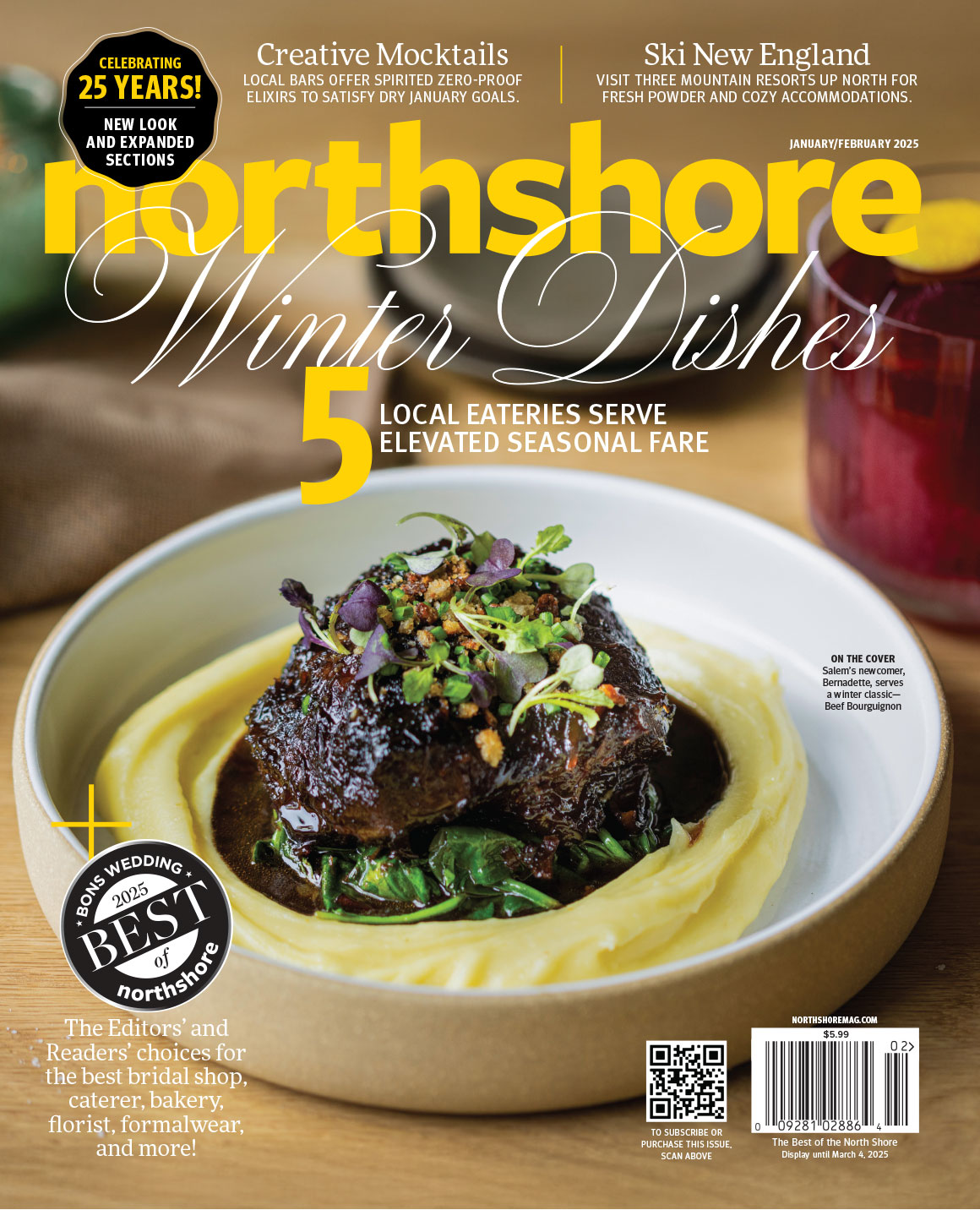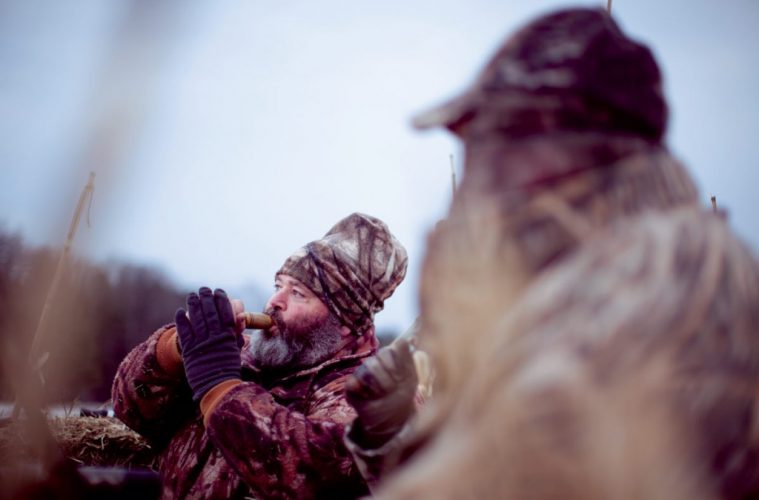With much of the grocery-store meat supply borne out of controversial conditions—from cramped and dirty living spaces to hormones and chemical preservatives—farmers and hunters throughout the North Shore are taking the matter of meat-getting into their own hands, employing safer, more sustainable methods. By Alexandra Pecci // photos by Matt Kalinowski
Here’s what’s in the freezer at Levi Wade’s Charlestown apartment: venison, pheasant, duck, Alaska salmon, striped bass, and fluke. None of it’s from the grocery store; he caught or hunted all of it.
“My freezer is kind of full right now,” Wade says. “For the foreseeable future, I won’t be going to the grocery store for a piece of beef.”
The 27-year-old Boxford native, who has only been hunting for a few years, got into it because of his dual interests in cooking and shooting. He started with clay targets, which he says is “like golf with a shotgun.” And rather than simply hunting for sport, “all of it’s shooting for food,” Wade says.
Factory-farmed meat is fraught with environmental and ethical dilemmas, from the cramped and often dirty conditions in which the animals live, to how the animals are slaughtered and processed, to the chemicals and hormones that are sometimes added to meat. It takes massive amounts of water, grain, and fossil fuels to produce just one hamburger, and according to the Environmental Protection Agency (EPA), ruminant livestock are one of the largest sources of methane emissions in the world. In fact, EPA.gov says that in the United States “cattle emit about 5.5 million metric tons of methane per year into the atmosphere, accounting for 20% of U.S. methane emissions.”
Although the local, do-it-yourself food movement has made its way to the North Shore in many forms, local and sustainable meat has been harder to come by. Not so for hunters, for whom game meat is the ultimate local food.
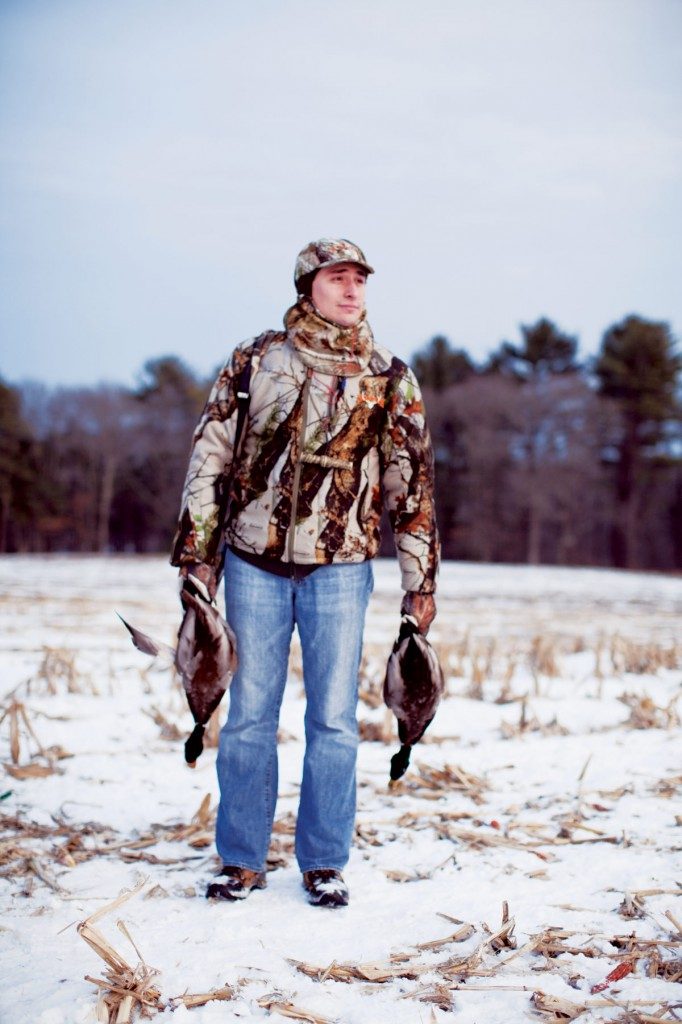
Levi Wade with his catch
Here on the North Shore, there’s an abundance of conservation and private land, such as Georgetown-Rowley State Forest and Willowdale State Forest in Ipswich, where people hunt everything from deer to duck to squirrel. Eating locally and sustainably might not be the primary reason that hunters hunt, but it’s a consequence that most of them deeply appreciate. “I’m so used to game meat now that it’s the flavor that I’d rather have,” says Doug Germain, a commercial fisherman from Gloucester and president of Ipswich Fish and Game Association. He says he almost never buys meat from the grocery store. Instead, his freezer is stocked with venison, duck, geese, and pheasant, and he “eats every last bit” of anything he shoots.
“You know how your animal was raised and you know how its life was ended,” he says. “It wasn’t mistreated, uncared for, beat up…that’s a huge part. And I know everyone that I hunt with will eat [an animal] just because they shot it.”
Shooting your own meat also means butchering your own meat, a task that local hunters take very seriously. “From woods to plate, I do everything along the line from shooting, gutting, hanging, aging, and butchering to pulling it from the freezer and figuring out what I’m going to make with it,” says Jonathan Cary of Peabody. “When you process your own food, you see where the food comes from, and I think you have a greater appreciation for it.”
Many hunters take this approach; doing so keeps them connected to their meat and ensures that they use every single part of the animal.
“I do it myself, so from it walking through the woods to it being in your freezer you haven’t lost sight of it,” Wade says.
Cary says he not only eats the meat, but also uses duck, goose, and pheasant feathers for tying fishing flies and affixing to the ends of arrows. Nat Moody, owner of First Light Anglers in Rowley, gives tanned deer hides to local fishermen for use as bait. “It lasts forever, and the lobsters chew on it in the bait bag,” he says.
But the biggest physical takeaway from hunting is certainly the meat. A single deer yields 30 to 40 pounds of venison, which lasts in the freezer for months when it’s vacuum sealed. Like chefs and butchers, hunters understand their meat, knowing which animals and cuts are best suited to which preparations.
For instance, Moody likes to prepare venison tenderloin with a rosemary-garlic rub (see sidebar). Germain’s favorite way to prepare goose meat is to marinate it in a mixture comprised of Ken’s Italian Dressing, a can of Coke, and a squirt of ketchup for two days before grilling it in chunks, steak-tip style. Wade likes to make roast duck with a cherry-reduction glaze. He also loves venison tacos. And Cary’s favorite is homemade venison sausage. From venison jerky and stew, to chili and meatloaf, to steaks on the grill, the possibilities for venison are endless.
Despite hunters’ deep appreciation of the animals they eat and the environmental role they play in controlling animal populations, hunting is still misunderstood. People are curious—and often squeamish—about the idea of shooting and processing animals themselves. Many people, even meat eaters, say they could never do it, wouldn’t have the stomach for it. Moody points out that most people are intimidated even by the thought of deboning their own turkey from the grocery store, let alone field dressing a deer; the concept of doing so is completely foreign to them. Yet meat doesn’t originate in packages at the store, he says. “It was a living, breathing animal.”
Hunters never forget that their meat was once a living, breathing animal. And they know that here on the North Shore, next winter’s venison might be living in the woods behind their house this summer.
“There might be a stigma that the meat you get from your backyard is somehow different than the meat you get from your grocery store,” says Wade. “But it’s all food.”
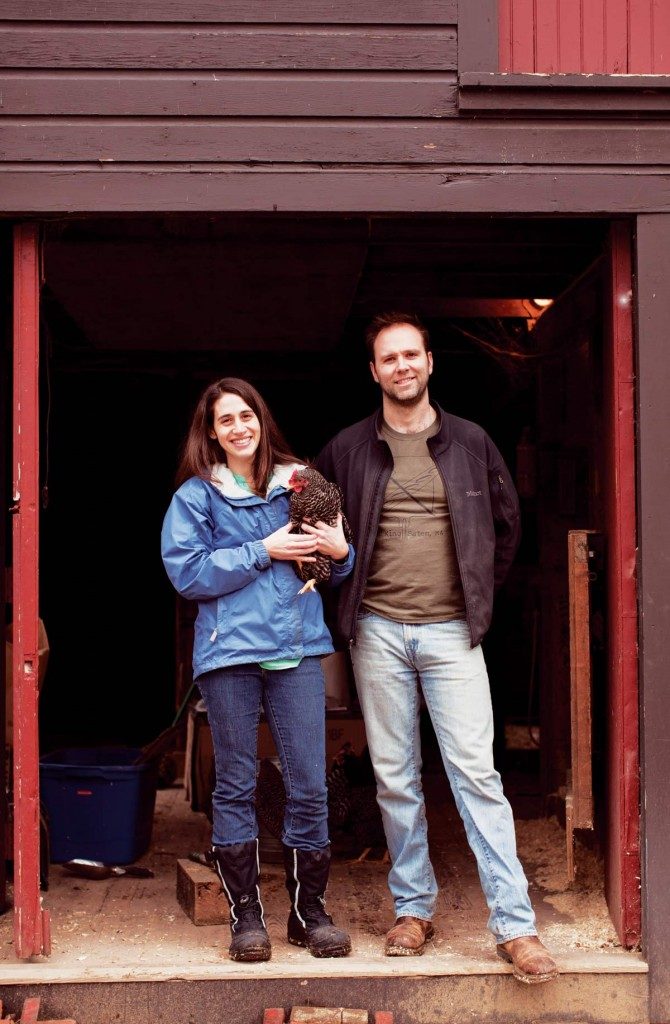 Jackie and Andy King at their Topsfield Farm
Jackie and Andy King at their Topsfield Farm
The Backyard Farmer
Hunting isn’t the only way that folks on the North Shore are getting closer to their animal-based food. An increasing number of people are raising their own animals, whether it’s a few chickens in the backyard for the freshest eggs imaginable or pigs to keep their freezers stocked with pork for months on end.
“I’ve seen an uptick in the poultry business in the last three to four years,” says Jack Donaher, general manager of Essex County Cooperative in Topsfield. After years of not selling baby chicks, Donaher says the store started selling them again two years ago after he noticed an increase in sales of chicken-raising accessories.
“The poultry business is really where the backyard farmer is going,” he says. “I think it’s because everyone wants to eat a fresh egg, and they know what the chicken is eating and how the chicken is being taken care of.”
One of those backyard farmers is Marcie Robicheau of Haverhill. Robicheau says her seven chickens not only make great pets (“They all have their own personalities and they’re fun to watch,” she says) but there’s also the added bonus that they provide food for her and her husband. She says farm-fresh eggs look and taste drastically different than eggs from the grocery store. “The yolk is really electric yellow-orange,” Robicheau says. “The difference just visually is unbelievable.”
Although the Robicheaus don’t raise chickens for meat, many people do, including Andy and Jackie King, owners of A&J King Artisan Bakers in Salem. They’ve also raised pigs at their Topsfield home.
“My wife and I have this kind of obsession with doing things ourselves,” Andy explains, adding that they also have gardens, brew their own beer, raise chickens for eggs, and of course, bake. Raising animals for meat “really seemed like a logical step for us.”
In addition to getting food from chickens and pigs, Andy says hogs are great for providing fertilizer, turning over soil, and eating kitchen waste. They take comfort in knowing that the animals are raised humanely, and the meat they provide is superior to that of factory farm-raised animals, Andy says. Plus, they’re grateful for and conscious of the animals themselves each time they eat the meat. Andy wants his daughters to know that meat doesn’t come from “little packages.”
“We tell the kids to say ‘thank you’ to the pigs before we eat them,” he says. “It’s an amazing thing to eat something that you raised yourself and have taken care of.”
Venison with Rosemary-Garlic Rub, courtesy of Nat Moody Nat Moody says he uses this simple rub on any cut of venison that is a single-portion size. “My favorite is a four-inch piece of tenderloin,” he says, adding, “This is my three- and five-year-old girls’ favorite!”
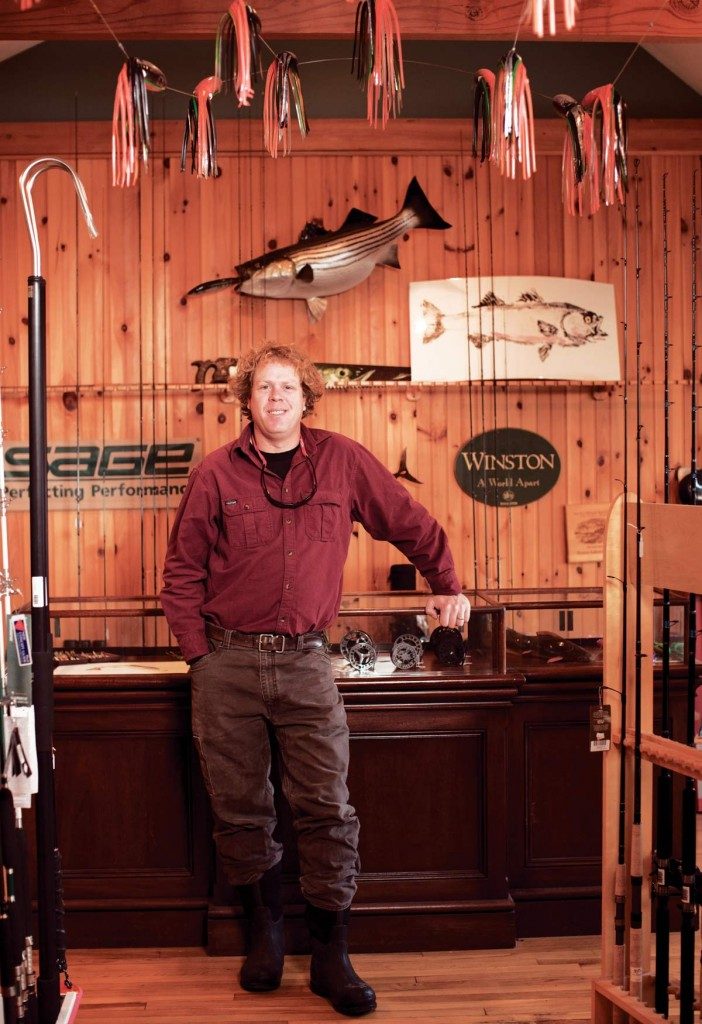 Nat Moody, owner of First Light Anglers in Rowley
Nat Moody, owner of First Light Anglers in Rowley
Ingredients:
- 3 tbsp. fresh, loosely chopped rosemary
- 1 sprig lemon thyme
- 1 tsp. salt
- 1 tsp. very coarsely ground black pepper
- 1/2 tsp. paprika
- 1 clove roughly chopped garlic
- Splash of light olive oil
Instructions: Grind rosemary, lemon thyme, salt, black pepper, paprika, and garlic to a paste using a mortar and pestle. Add enough very light-tasting olive oil to saturate the paste thoroughly. Marinate venison in the mixture for one hour (Moody prefers to do this in a Ziploc bag on the counter).
Heat oven to 400°. Bake venison on a wire rack over a cookie sheet for 12 minutes on the middle rack of the oven. Turn oven to broil (500°) and broil each side for two minutes. Rest briefly and serve with roasted fingerling potatoes and creamed spinach.
